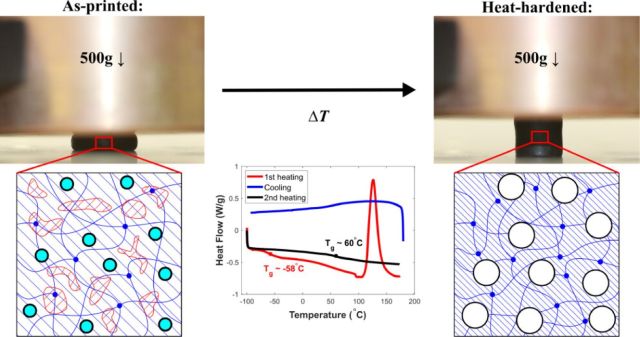
Latent Thermal Transformation of 3D-Printed Polymer Composite Foams Provides Tailored Mechanical Properties
Younghoon Kwon, Yongkui Tang, Claus D. Eisenbach, Megan T. Valentine. ACS Applied Polymer Materials. 7(7):4142-52 (2025).
Abstract
Lightweight all-polymer composite foams are fabricated using digital light processing via sequential photopolymerization and thermal activation to expand internal foaming agents, thereby promising alternate routes of manufacturing and installation. However, multistage thermal processing can lead to processing-related defects, restricting the full potential of such foams. To investigate the complex evolution of material properties, we comprehensively characterized their thermomechanical properties during each fabrication stage. Through the heat treatment of fabricated foams, a notable exothermic reaction at elevated temperatures attributed to the thermal curing of residual monomers could be accessed. This postfabrication enhanced material stiffness arises due to a phase transition of the foam matrix from a two-phase polymer-rich/monomer-rich structure to a fully cured single-phase polymer network with no measurable change in foam porosity or void microstructure. We demonstrated that this postfabrication heat hardening could be kinetically controlled to tailor mechanical properties. By advancing our understanding of processing–property relationships, this work offers ways to streamline the manufacturing of precisely engineered composite foams with properties and functionalities that can be introduced on site and on demand.